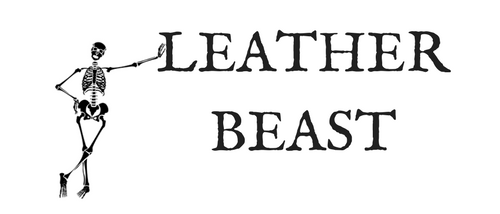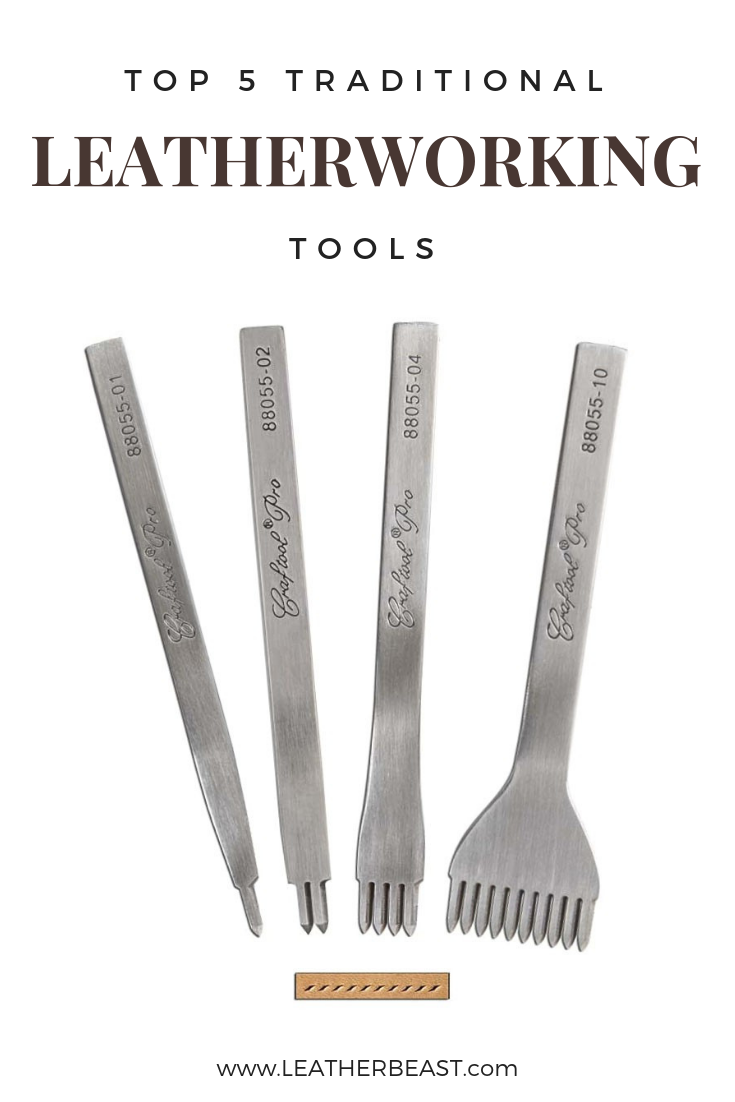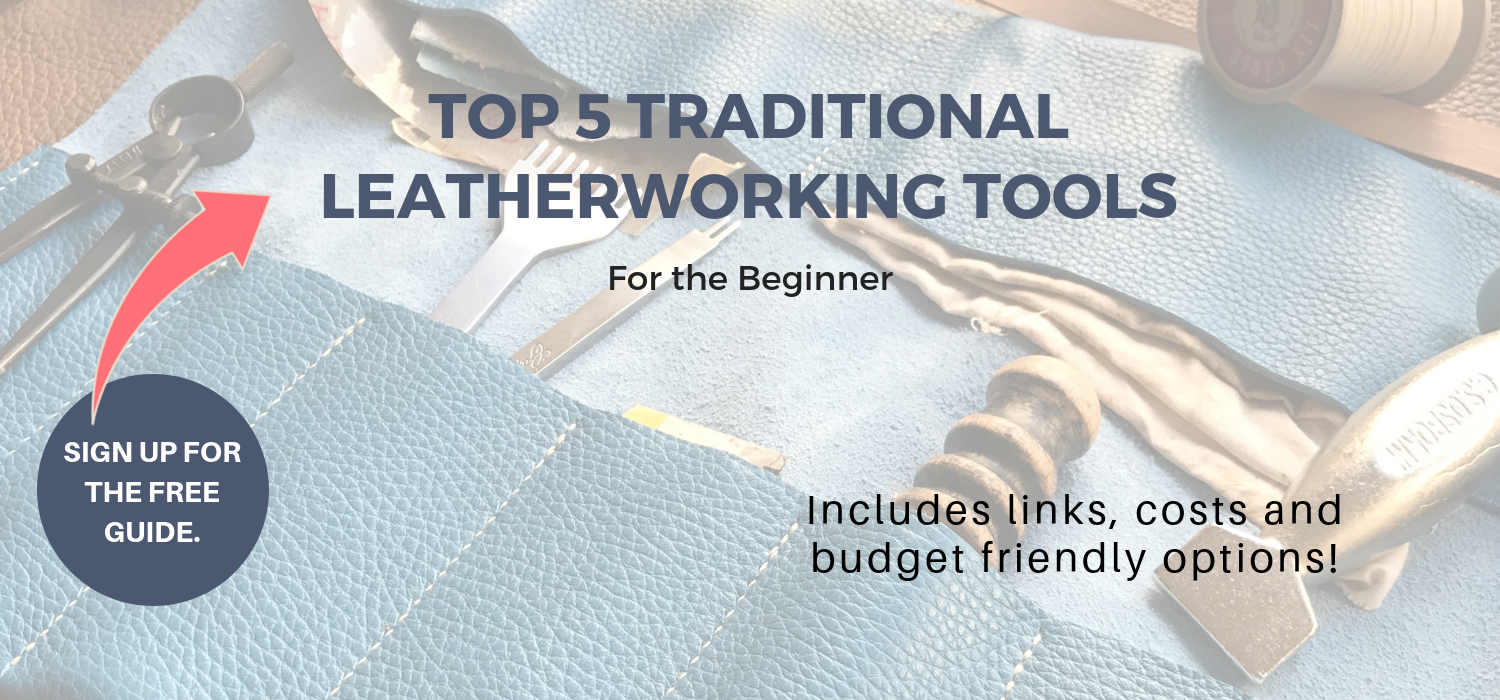Top 5 Traditional Leatherworking Tools
Last week I talked about how to buy leather and how to navigate the different options that are available and determine what is right for your project. Now lets talk about beginner tools needed for traditional leatherworking.
I hear the following statement a lot…
"Leatherwork is an expensive hobby and I just don't have the budget for it".
Believe me, I get it!
I was totally there, about 7 years ago.
After my workshop with my master leatherworker, I wanted to purchase and use the same very high quality tools and materials that we used in that class.
And since a lot of them had a high pricetag, I actually acquired my kit of higher end tools slowly over time. I knew for sure that my leatherworking obsession was here to stay so I felt that it was better to get the best quality that I could afford over time rather then a bunch of cheap tools right away.
What tools you need for traditional leatherworking largely depends on what you're going to make, but at the most basic level you're going to need a few basic tools.
Below is a list of the top 5 leatherworking tools that you should absolutely have in your leatherworking toolkit.
I like the top quality tools so while some of these tools might be a little out of your budget I also give some budget friendly options as well.
1. Stitching Chisels
Stitching chisels are like little forks with multiple tines and these tools are necessary to use if you want to get those perfectly slanted stitches.
Stitching chisels are similar to pricking irons, in that they’re used to make your stitch holes prior to saddle stitching. The difference between stitching chisels and pricking irons is that the irons just mark the stitch placement and don’t usually make a hole that goes all the way through.
Stitching chisels are a key element in creating the classic and beautiful slanted stitch which is one of the telltale signs of luxury leather goods.
One benefit of purchasing the chisels over the irons, is that because the chisels pierce the leather all the way through, you don’t need to use a diamond point awl to pierce the leather during stitching.
If you want to use the stitching chisels I recommend the Crafttool Fine Diamond chisels in the 8 prong and 2 prong to handle curves.
If you want to use pricking irons, I recommend Vergez Blanchard. This French company has been manufacturing their signature hand tools since 1823. They are known for their high quality tools as a result of traditional hand forging methods that they use in the manufacturing process. I use the #10 and #2 sizes of the pricking irons.
Craftool stitching chisel #8 cost: $28
Craftool stitching chisel #2 cost: $27
Vergez Blanchard pricking iron set cost: $320
2. Wing Dividers
Wing dividers are used to create a stitch mark guideline along the edge of your project. Once you've created this line by running the wingdividers down the edge of your project, you're ready for creating your line of stitch marks with the pricking irons.
C.S Osborne & Co. is an American family owned company located in Harrison, NJ and has been operating since 1826. The 8th generation is running the business today, which still adheres to the strictest guidelines for quality tools and craftsmanship.
C.S Osborne & Co wing dividers Cost: $39
Tandy Leather wing dividers cost: $18
3. Saddlers Needles
Here is another European company with origins dating back to the 1840s that has a reputation for being one of the best in their field.
John James Needles is the British manufacturer of the straightest and best round tipped saddler's needles specifically designed for leather hand sewing.
Saddlers needles are what you want. These are strong needles with a rounded tip. You can purchase these directly from the site or ebay and Amazon and they're fairly inexpensive.
I've never bled from one of these needles.
Another fun fact - the company is based in Redditch, Worcheshire, an area that is known as the Needle Capital of the World! Thats going on the places-to-visit list!
John James saddlers harness needles cost: $10
4. Fil Au Chinois Linen Thread
Thread type is very important when creating beautiful rows of saddle-stitching. Thread choice can make a huge difference in the quality of your work.
Fil Au Chinois is a French brand of linen thread that has been around since about 1827 and is my favorite brand of waxed linen thread to use.
Linen thread does not stretch or give over time, it is very strong and durable, and due to the natural fibers and the way that they're twisted together in the manufacturing process, it knots very well.
Fil Au Chinois linen thread 50M cost: $14
Fil Au Chinois linen thread spool cost: $24 - $37
5. Stitching Clam or Pony
The last tool that I recommend for traditional leatherworking, is the stitching clam.
The stitching clam is a simple tool that holds your work in place, while you sew. Used by placing the leather piece that you're sewing between the jaws and with one leg swung over top of the clam, the pressure from your leg keeps the jaws tight on the work.
Made by hand by some very skilled woodworkers, the Vergez Blanchard clam is a beautiful tool in it's own right.
Stitching pony is a great alternative to the stitching clam. This is a vice-like tool that holds your work for you while you stitch, similar to the clam only usually used on a table top or bench.
Vergez Blanchard stitching clam cost: $250
The costs for leatherworking tools as you can see have a huge range.
From high-end hand-forged European tools that will last a lifetime and can be passed down to future generations to decent options for beginners that are on a shoe-string budget, there is something for everyone.
I encourage you to get the best quality tools rather then a large quantity of tools.
So don't let the cost stop you from exploring traditional leatherwork.
What are your favorite leather working tools? Do you have one single favorite tool that you just can't live without?


